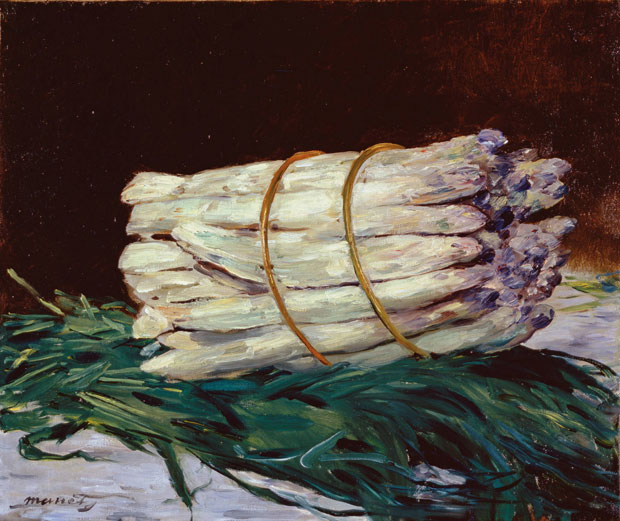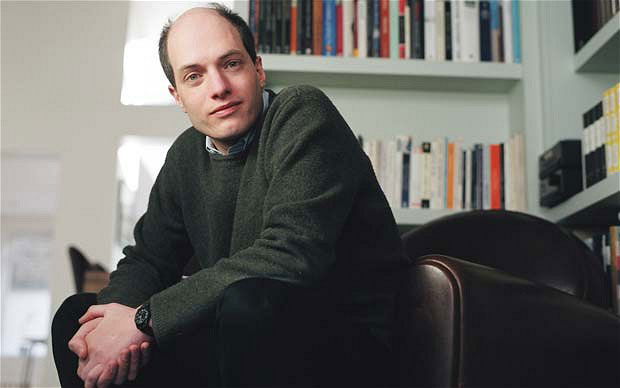
Could this Manet painting relight your fire?
Alain de Botton thinks so and has an interesting theory about how to make love last in his new book Art as Therapy
Nietzsche wrote that “We have art that we may not perish of the truth.” By this, he didn't mean that art is escapist but that it helps us cope with, and face up to reality. In their study Art As Therapy, Alain de Botton and John Armstrong tackle this issue head on. What is the use of art? How does looking at it help us in our day to day lives? They argue that the purpose art serves is as a therapeutic tool. This book is itself an extremely valuable and helpful tool in enabling us to do just that. Using a range of examples from Vermeer to Bansky, they show how we can use works of art to assist in dealing with sorrow, in self-understanding and making sense of our experiences.

The work of old masters might well seem remote from our lives but the authors' accompanying text for one particular work, Édouard Manet's Asparagus (1880) shows what they are driving at. What could a 19th century painting of a slightly unassuming looking bunch of vegetables say to us in the 21st century? For De Botton and Armstrong, it is Manet's seemingly unflattering treatment of the asparagus that is the point. In delicately depicting the subtle individuality, the hue and tonal variation of each of the fronds, Manet reveals their ignored merits.
The authors give the work an alternative title. “There are lessons for long-term relationships in the way that Manet approached asparagus.” And so there are. In contemplating our partners, we should get past the complacency that comes from everyday living with the same person and, like Manet, all that is actually good, decent, beautiful and uniquely worthy about them – their hidden charms, which habit and familiarity tends to make us overlook. Want to know more about the book? Learn more about it here or go straight ahead and buy it from the people who made it.
Incidentally, there's a lovely story associated with Manet's asparagus which our Information Coordinator Nat Foreman has just told us about. The person who bought the painting apparently overpaid Manet, so the artist made an extra painting of one piece of asparagus.
‘The person’ who bought it was Charles Ephrussi, who once employed Marcel Proust, and is considered to be one of the inspirations for Charles Swann in Proust’s masterwork À la Recherche du Temps Perdu (In Search of Lost Time). Charles is also a relative of our own Edmund de Waal - check out his The Pot Book - and was also the original collector of Japanese netsuke that are the central focus of Edmund's best-selling memoir The Hare With Amber Eyes. Finally, if you'd like to learn more about Manet, we have a great colour library book here.